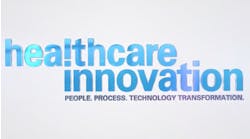Leveraging advanced healthcare data analytics was rated as a top 10 leadership priority for the next year to improve patient outcomes, reduce both clinician and business office administrative burdens, and support value-based care initiatives balancing patient, provider and payer needs. While the possibilities are exciting in theory, oftentimes, healthcare organizations are not sure how to practically apply data analytics for meaningful change and measurement. To aid leadership strategies, check out four ways to leverage data analytics within health IT.
1. Service desk insights– By integrating real-time data analytics insights into the IT support desk, hospital and IT leaders have greater transparency of EHR utilization across the organization. This clarity can pinpoint spikes in departmental workflow or access issues and identify repeated end-user errors. Through EHR incident analysis, health IT leaders can proactively discern end-user education gaps, which can curb clinical care delays, ease system adoption and reduce EHR burnout. This combination translates into streamlined workflow, higher staff productivity and maximized EHR use for ROI.
2. Performance optimization– Long-lasting improvement comes from the continual process of measuring performance, assessing progress, deploying modifications and resetting goals. Granular performance values work well for month-to-month comparison, but IT leaders must also consider monitoring from a 40,000 feet above perspective. For physicians, analytics should include statistics for patient/caseload, overbooked appointments, chart completion rate and patient wait times. For clinical staff, include ED and clinic throughput, number of missed appointments, and error rates for registration and charge entry. With this approach, IT performance pictures become truly tangible when details and overviews are combined.
3. Executive and key stakeholder insight– Monthly values for gross revenue, reimbursement, and ED and acute admissions are just dry numbers without their needed dimension. Dashboards can easily track performance levels and convey trends with the simple inclusion of progress bars for key measurements. Busy executives cannot readily put together an accurate mental picture; that’s what a business intelligence (BI) solution dashboard should do. To meaningful convey data trends, evaluate which dashboard design features are being selected and ensure the best graphic choice is being made.
4. Data deluge– It is easy for analysts and even key decision makers to get lost or overwhelmed by the sheer volume of data processed into their BI solution. The secret to successful management is knowing what you want to achieve and understanding the data’s optimal source. Beware of data from downstream applications. This data typically suffers from transformational changes caused by interfaces. For data reliability and top integrity, project leaders should pull data from its original source. How is that identified? It is defined through the work of a specialized data analytics committee composed of end-user community members and key IT analysts. This group should prioritize work requests, define new extract needs and plan data uses.
Applying these four considerations to an advanced data analytics strategy will arm health IT leaders with meaningful cross-organizational insights to drive down costs and improve clinical decision making. Hospitals and health systems can see better ROI from BI solution partnerships with real quantifiable outcomes.
Joncé Smith is the vice president of revenue cycle management at Stoltenberg Consulting, Inc.

